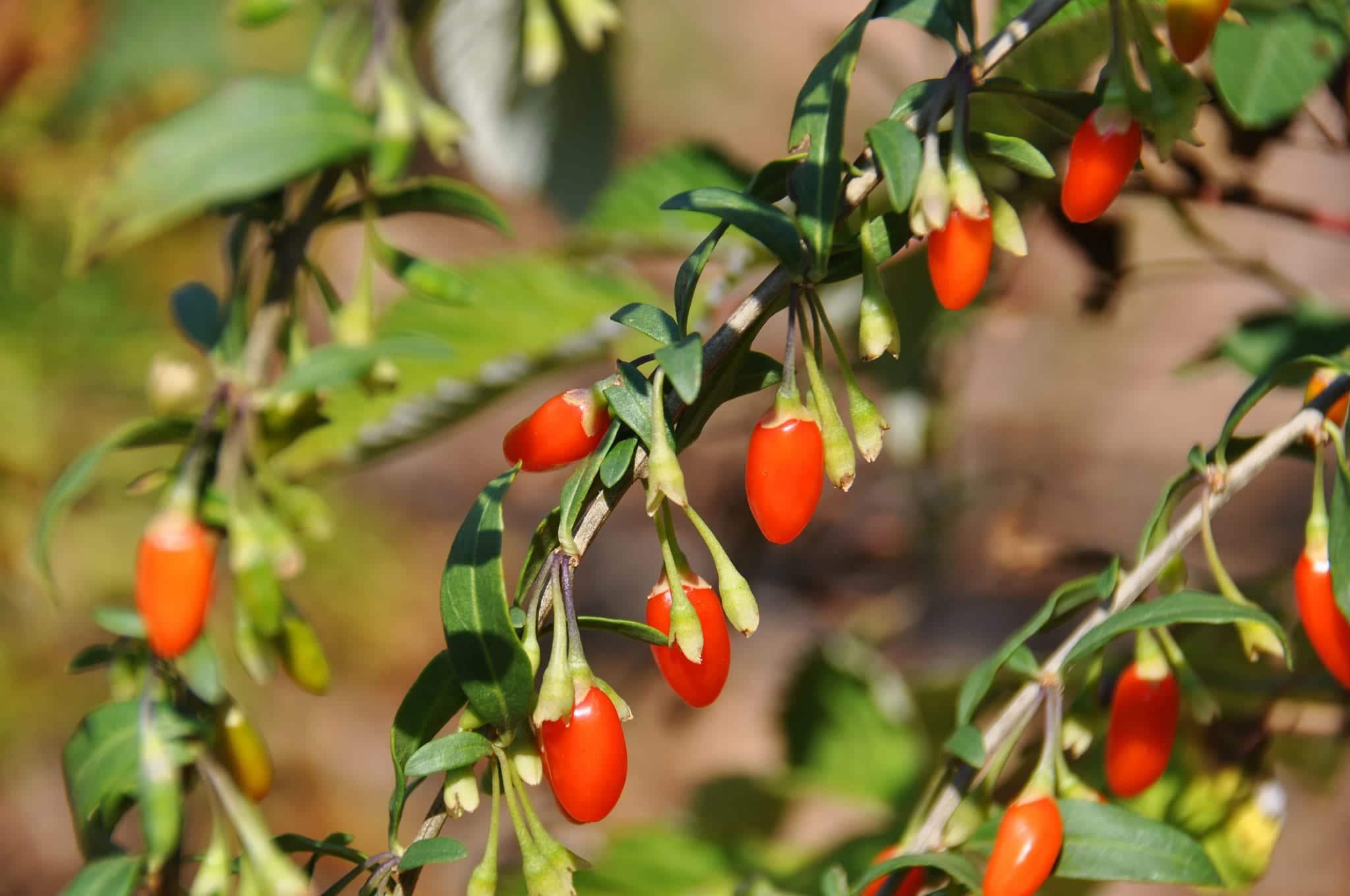
Image - Flickr / Lotus Johnson
The Goji plant is a shrub known as Lycium barbarum. Sowing its fruits can result in something quite interesting, something that is due to the fact that the cultivation of this type of berries is quite rustic.
It is a plant that can grow very easily, and when it reaches its full development, it gives us the power to enjoy a delicious and beneficial fruit that most of us know by the name of Goji Berries.
What is goji?

Image - Wikimedia / Sten Porse
What is goji like? Good It is a shrubby plant native to China that grows between 2 and 4 meters in height, for about the same width. Its branches are protected by thorns, and they have lanceolate green leaves that fall in autumn when the cold arrives.
The flowers are bell-shaped and have five pink or purple lobes. And the fruit is a fleshy red or orange berry that is about two centimeters long.
What is?
The plant itself is widely used to decorate gardens and terraces.. It is easy to maintain well, making it interesting even for those with little experience. But it is undoubtedly its berries that have made it a popular shrub.
And is that goji berries have antioxidant properties, that is, they delay aging. This is because they are rich in vitamins A and C, which are essential to maintain the skin with greater elasticity.
In addition, as it has a low calorie content, can be included in weight loss diets. But, we must also mention that they are rich in amino acids, calcium, potassium and phosphorus, omega 3 and omega 6 fatty acids, and 21 trace elements among which are magnesium, iron, copper, nickel, selenium and cobalt.
Goji care
Goji is a shrub that can grow in excellent conditions in temperate regions, but taking into account that it tends to prefer a warmer climate, because it has a better development in conditions that are of higher temperatures. However, it is important to know that it can withstand temperatures as cold as -10 degrees Celsius, hence it is very interesting to know how to take care of it. So let's find out:
Location
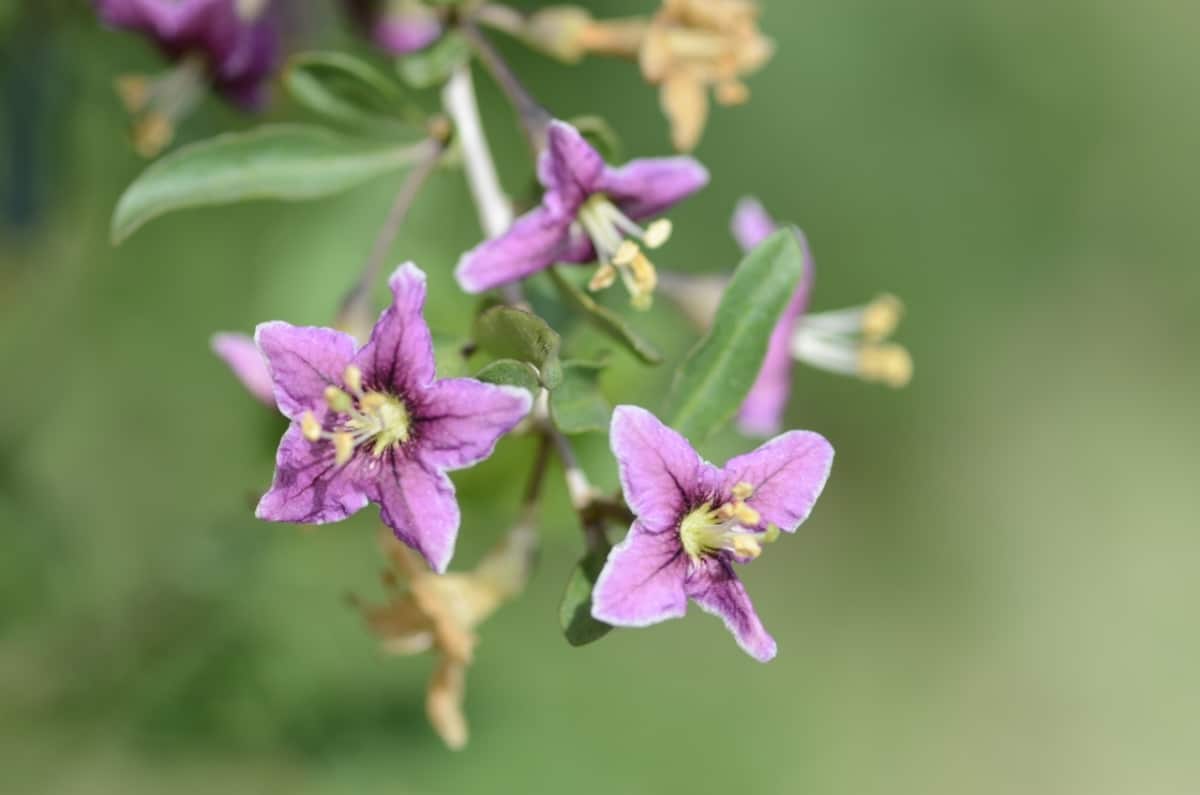
Image - Wikimedia / Radio Tonreg
This is a plant that she needs to feel the passing of the seasons so we will place her outside the home, either in the garden or on a terrace. In addition, it is necessary that we try to put it in an area where it will be exposed to sunlight, if possible directly.
Now, if it is not possible, another option is to put it in semi-shade, or at least in a place where there is a lot of light. This will make it easy for you to grow goji berries.
Earth
- Flower pot: Since the plant is small, it is interesting to grow it in a pot. It needs to have holes in its base, and be large enough that it can grow well for about two years. This means that if the earth bread has a diameter of about four inches, for example, the new container you have should be about eight inches or so. As for the land, we can use universal growing substrate (for sale here).
- Garden: it is important to bear in mind that the soil needs to have excellent drainage, since in order for the Goji to develop well, it is necessary to avoid water stagnations at the base of said plant, otherwise damage will occur that they can be at a root level.
Irrigation
How often do you have to water the goji? In general, it should be ensured that the earth does not remain dry for a long time, since prolonged droughts harm it. Therefore, we will water more frequently in summer than in winter, since this is when the soil takes less time to dry.
Also, when watering, we will pour water on the earth, without wetting the plant. This is especially important if it is exposed to direct sunlight, since if we wet its leaves they would burn. Now, another thing we can do is water in the late afternoon, when the sun is low.
Subscriber
In spring and throughout the summer we will pay it using products of organic origin, such as guano, manure, worm castings, or mulch. The only thing to know is that if we grow it in a pot, it will be preferable to use liquid fertilizers so as not to interfere with the drainage of the water, and that the indications that are specified on the packaging of the products must be followed.
Transplant
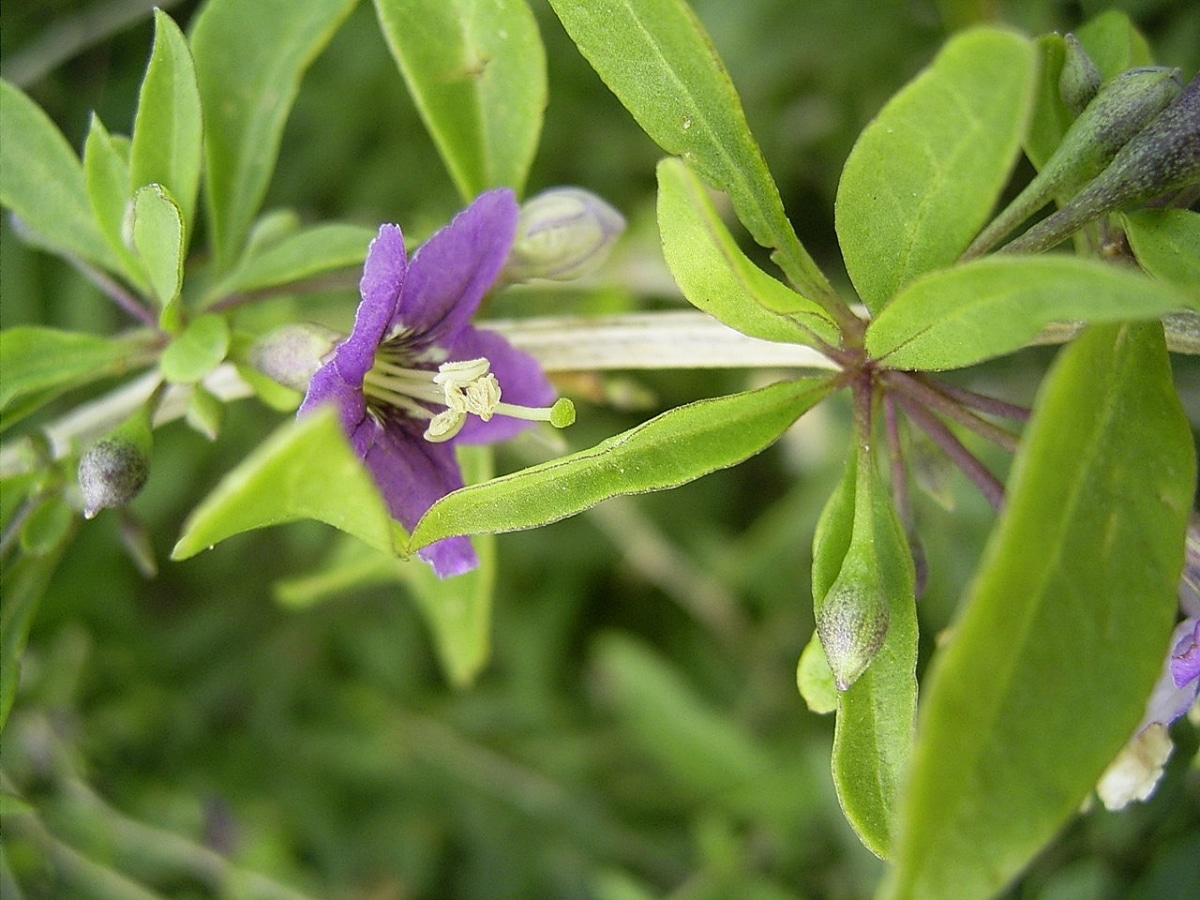
Image - Wikimedia / TeunSpaans
Goji must be transplanted in spring, and if it is potted every two years or so. It is not a plant that grows very fast, but like all plants, if it runs out of space it will stop growing, and it could become very weak.
Multiplication
Goji multiplies by seeds, which have to be sown in spring, or in autumn if the weather is mild after soaking them for about six hours. They are sown in seedbeds, either pots or trays with holes, filled with mulch (for sale here), or if preferred, with specific soil for seedlings.
We will avoid putting many in the same area, since otherwise competition between them would be created and we could lose a few. In fact, the best thing to do is put a couple of them in a pot that measures about 10,5cm in diameter, or a seed in each socket if you choose to sow them in a tray.
Rusticity
It is a shrub that can be grown outdoors all year round in many parts of the world, since resists frost down to -10ºC. If it is colder in your area, then do not hesitate to protect it with an anti-frost fabric.
The Goji harvest
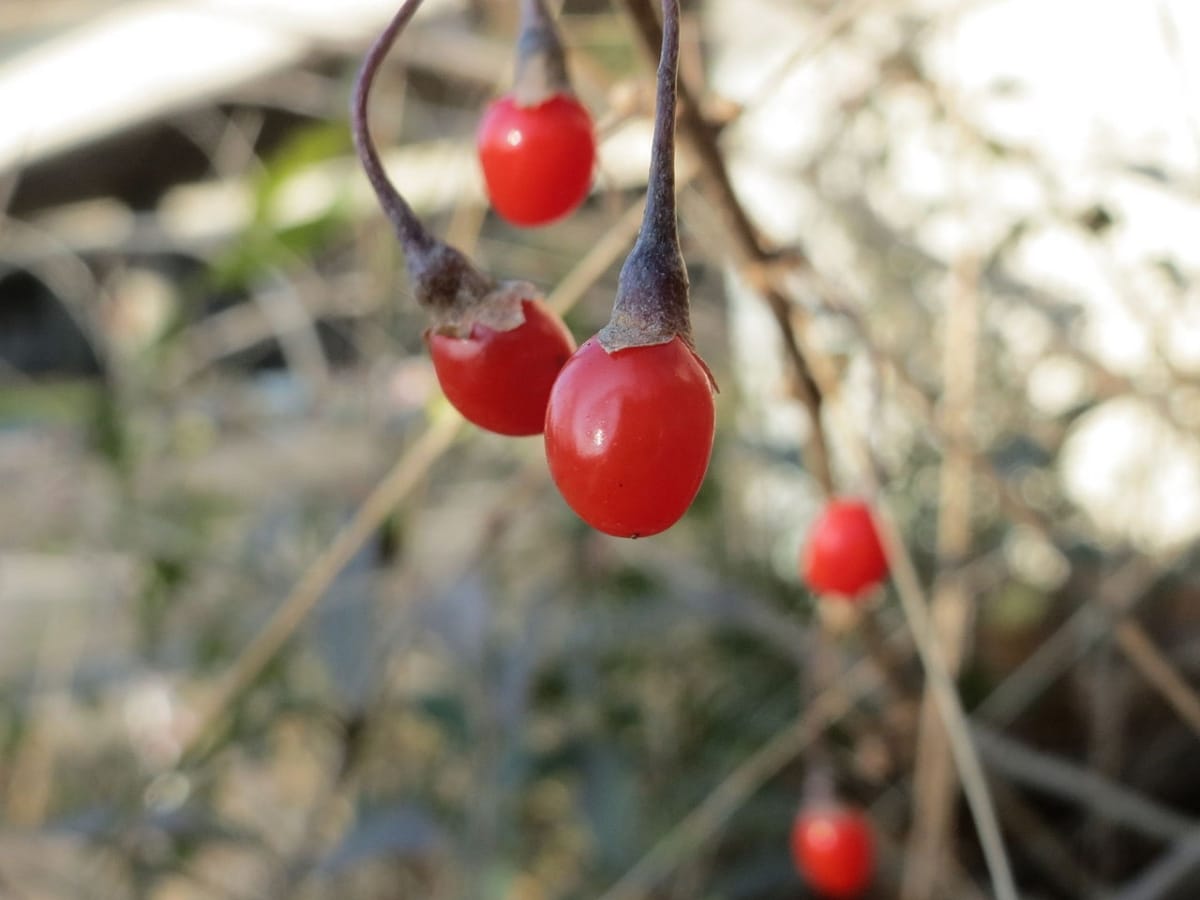
By the time goji berries are close to ripening, they need to be chosen with great care. For that, we have to take them one by one, but despite this there is a technique to have greater assurance that these berries are ripe.
If we want to know when this sweats, we have to shake the bush a bit. The berries that have fallen naturally and have become loose are those that are ripe as well as ready for consumption.
Drying Goji Berries
In order for the berries to be dried, a process that is industrialized is generally used, but there are a couple of ways that we can implement to dry the berries in our own home.
Drying in the sun
- The main thing for this process is to clean each of the Berries.
- We place the berries extended to the son in some place that has very little humidity.
- For this process it is important to be very patient and little by little check the level of drying.
- When the Berries are dry and to our liking, we can pick them up and then put them away.
Oven dried
Although this is a much faster technique, it uses a lot of electrical energy, however it is also a good option.
- The berries are cleaned and dried.
- They are placed flat on an oven tray.
- The tray with the Berries is inserted in the upper part of the oven.
- The door is left open.
- Place at a temperature of 150 ° C.
- In half a day the berries will be completely dry.
How much goji should be taken per day?
This is best told by a nutritionist, but in principle with 20-30 grams per day its short-term effects can be seen and felt. It is important not to exceed this dose, since not only is it not necessary but it could be dangerous in the long term.
How are goji berries eaten?
To consume them first you have to put them in a glass of water for a few minutes, until they rehydrate. Later, you can consume them as is, or preparing juices with them. You can also include them in desserts, for example, as a dried fruit.
What are the contraindications of Goji berries?
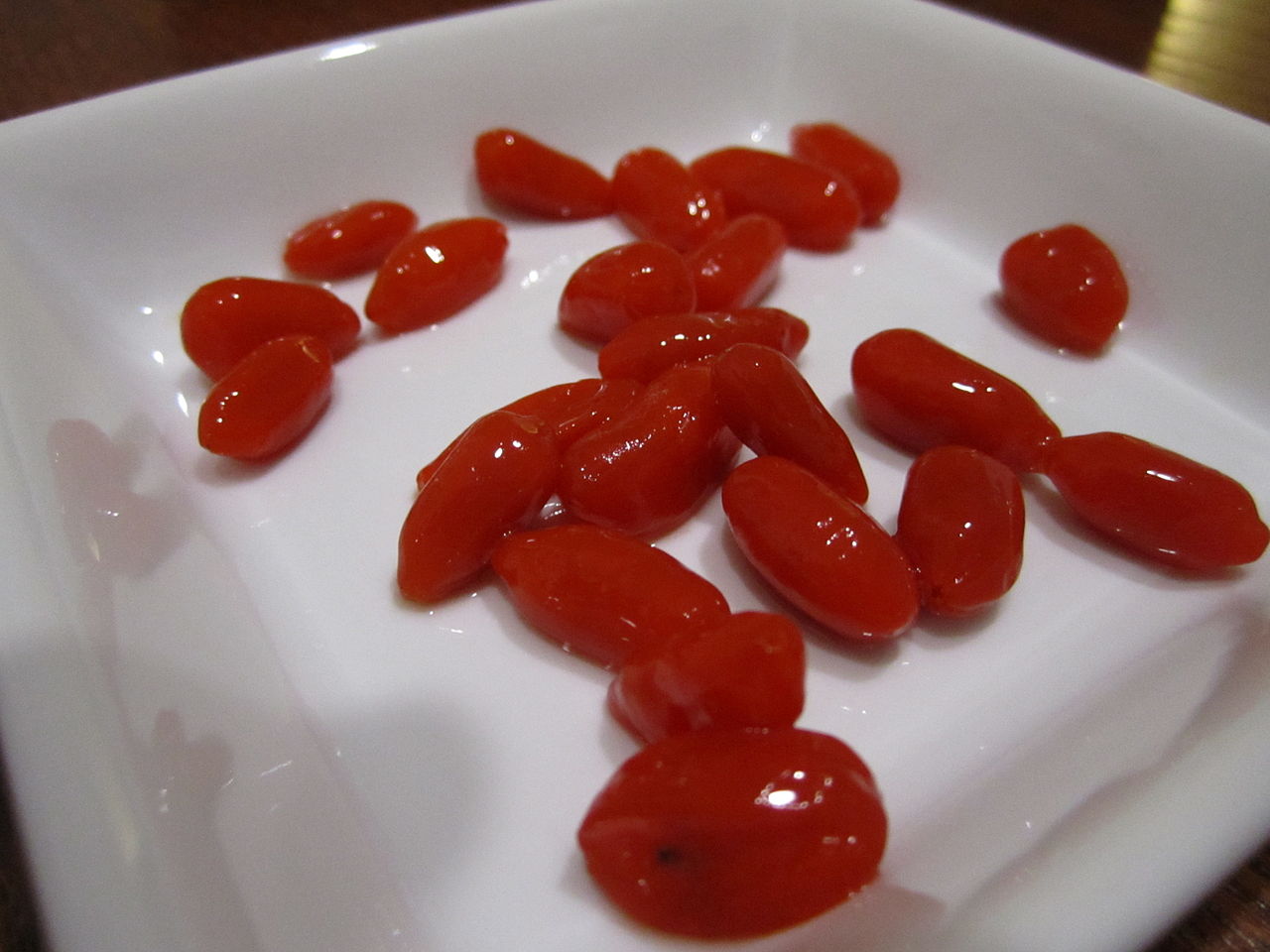
Image - Wikimedia / GiryaGirl
Although they are considered a highly recommended food, we cannot forget that they can also have side effects. In fact, there are a series of population groups that should not consume them, and they are:
- Pregnant
- Allergic to pollen
- People with low blood pressure and / or with digestive problems
- People taking anti-clotting drugs or herbs
But not only that. If you buy goji berries, it is important to make sure they are environmentally friendlyOtherwise, the OCU alerts us in the long term, we could end up with problems such as loss of bone density. Why?
According to a study carried out by this organization that you can consult hereIn these non-organic berries there are up to 13 different pesticides, such as Fenpropatrin; copper in high levels, between 7,55 and 9,71mg / kg; and cadmium above the legal limit of 0,05mg / kg.
We hope that what we have told you about goji and its berries has been useful to you.
Dear partners,
In the photo at the top of the article there is a plant that has nothing to do with goji (like a tomato and a rose, for example). It is clearly seen by the shape of the leaves and the fruit that it is one of the varieties of the dog rose.
A cordial greeting,
Vladislav Glushenko
Thank you very much for the warning. It's already changed.
A greeting.
Good afternoon at the end of 2016 I sowed seeds that germinated and now they are 70 cm bushes, they are almost 3 years old and they have not given me a single fruit, I have them in full sun and I fertilize them with humus and sheep manure, I would like to know how how old they begin to bloom, thank you.
Hello Rodrigo.
If they are in large pots I don't think they take long to bear fruit: maybe 2 more years, but I don't think you have to wait long.
Greetings.
Very good information. Your kindness is appreciated, as many of us know its fruit, but not its origin, its reproduction and its image as a plant.
Hello Raul.
Thanks to you for commenting 🙂
How is pruning done?